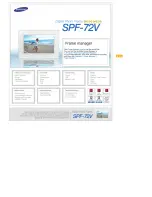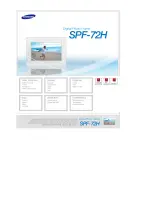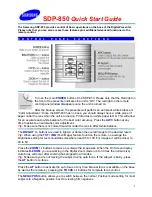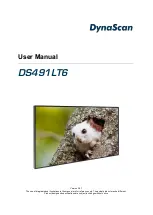
- 16 -
Maintenance
Insulation Resistance
Check insulation resistance periodically. Use a hand
cranked or solid state insulation resistance tester and
test with at least 500 volts, but not greater than motor
rated voltage.
For motors with newer insulation systems such as
MICLAD™ VPI, the insulation resistance after one
minute should be greater than 1000 megohms.
(Values in excess of 5000 megohms are common.)
For older motors, the minimum value recommended
in IEEE Standard 43 can be used. The value in
megohms, when corrected to 40°C, is equal to the
motor rated voltage in kilovolts plus 1. For example,
for a motor with a rated voltage of 2300 volts, the limit
value would be:
2.3 + 1 = 3.3 (megohms).
Drying Insulation
If the insulation resistance is less than satisfactory,
and the cause is believed to be excessive moisture in
the windings, dry the windings by applying heat from:
1. A warm air oven.
2. Electric
strip
heaters.
3. Circulating
currents through the coils.
The heat should be applied slowly so the desired
temperature will not be obtained in less than six
hours.
Insulation Drying Temperature*
Class “B”
Class “F”
Class “H”
200°F 245
°
F* 275°F*
94°C 118°C
135°C
*Class “F” and “H” insulated units should be baked at 70%
specified temperature (to avoid steam inside winding) for about
six hours, before temperature is raised to drying temperature.
Insulation resistance should be measured before the
heat is applied, and every six to eight hours
thereafter.
NOTE
Insulation resistance will decrease as the motor warms
up; but will begin to increase as the drying process
continues.
A uniform temperature must be maintained in the
motor to obtain constant resistance readings. When
the megger readings remain constant, the drying
process is complete and may be discontinued.
Check for other causes if readings are still low.
Warm Air Oven Drying
1. Remove bearing housings.
2. Remove
rotor.
Bake in oven at temperatures specified in Insulation
Drying Temperature table, and follow procedures
described for drying insulation.
Electric Strip Heater Drying
1. Remove bearing housings.
2. Remove
rotor.
3. Direct a fan on stator to carry away the moisture.
4. Attach temperature indicators to winding and
apply heat as specified in the Insulation Drying
Temperature table and follow procedures
described for drying insulation.
5. Radiant type heaters are not recommended
because some parts may become scorched
before remote parts reach desired temperature.
Circulating Current Drying
1. Remove bearing housings.
2. Center the rotor in the stator core.
3. Wedge fiber strips into the lower part of the air
gap so rotor does not touch stator core, or
remove rotor.
4. Direct fan on unit to blow away excessive
moisture.
5. Attach temperature indicators to windings. Do not
exceed the drying temperatures in the Insulation
Drying Temperature table.
6. An external source of current can be used to
circulate direct current through the winding of any
type of alternating current motor. A portable low
voltage motor-generator set, such as is used for
welding, is usually suitable.
CAUTION
High temperatures.
May cause damage to insulation.
Avoid hot spots and radiant type heat
Содержание HiPath 500
Страница 26: ... 25 ...
















































